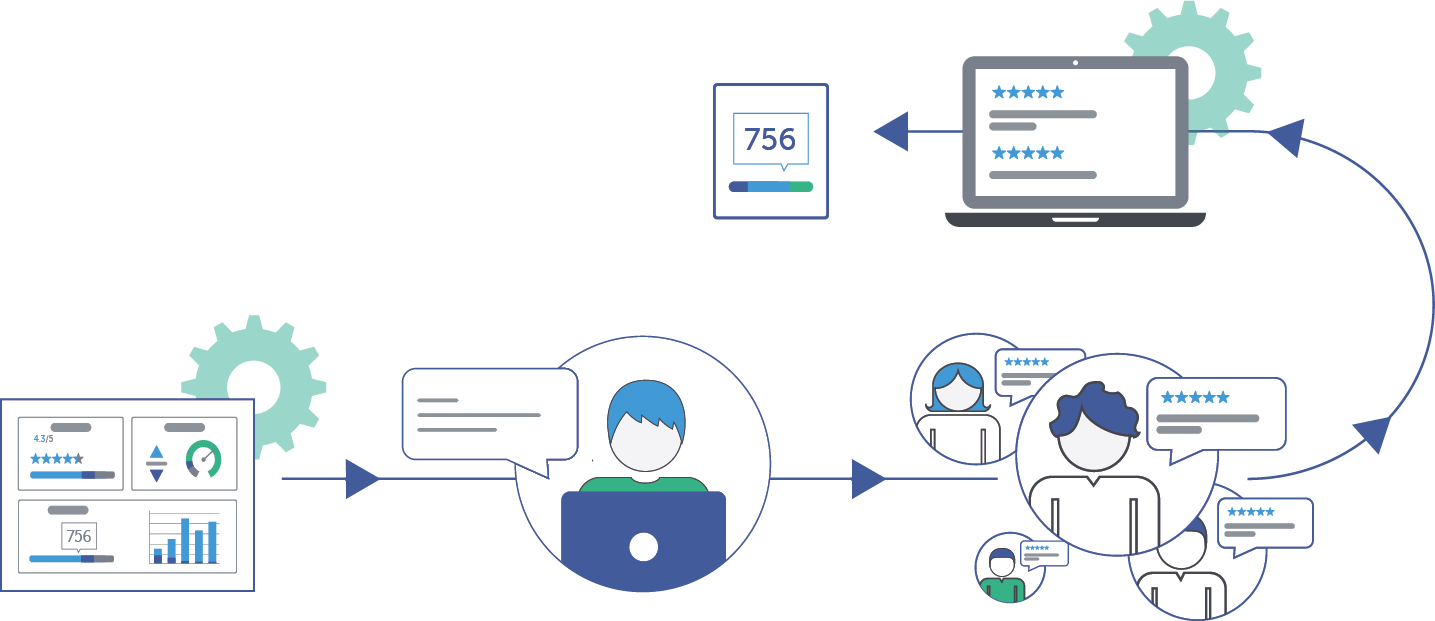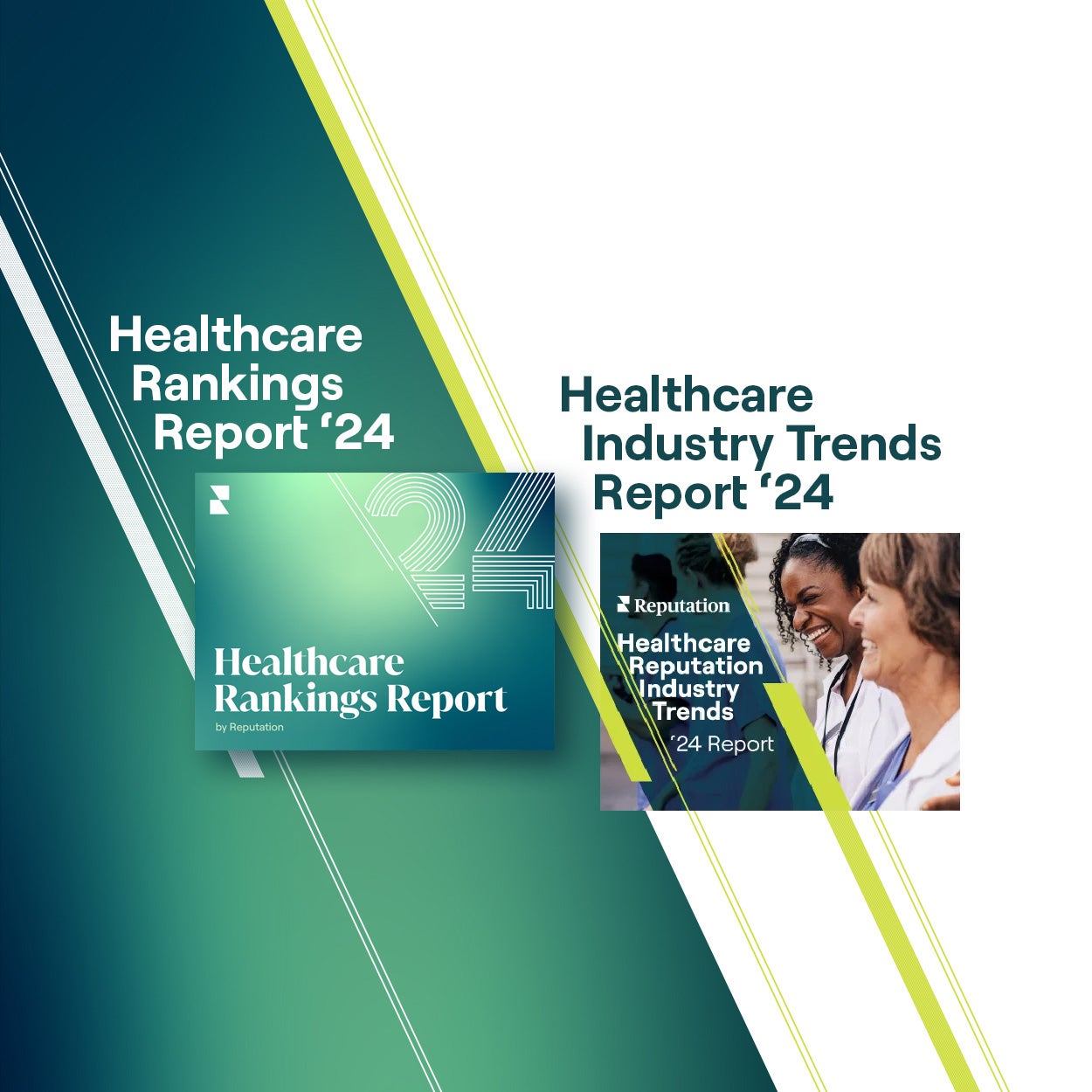Top Trends for Online Reputation and CX Management in 2019
Reputation Staff Writer

Introduction
Online reputation management (ORM) has never been more critical to multilocation businesses. It’s important to take inventory of what digital marketing and ORM trends gained momentum, and what to expect moving forward.
In 2018, Google maintained its dominance in online review volume and consumer exposure, eclipsing all other review sites. However, Facebook also rose in priority among businesses looking to expand their digital footprint and connect with consumers. As predicted, usergenerated content is increasingly critical to SEO and weighs heavily in search rankings — and the voice of the customer is loud and clear across every channel.
As these trends continue to guide marketing leaders’ strategies in the coming year, other emerging trends can mean boom or bust for multi-location businesses. In this eBook, we’ll explore the five that we believe will have the biggest impact on your business in 2019:

- Building trust with consumers will be more critical than ever, requiring increased brand transparency and proactive customer engagement at the local level.
- Online reputation and CX management will merge, as a brand’s reputation and the experience it provides to customers are inexorably linked.
- Businesses will increasingly leverage AI and machine learning techniques to improve CX.
- Consolidation of ORM and CX point solutions will reduce risk, cost and complexity.
- Automation and mobile-first strategies will simplify ORM for businesses, enabling more immediate service recovery and customer engagement.
Trends With the Biggest Impact
1. Building trust with consumers will be more critical than ever, requiring increased brand transparency and proactive customer engagement at the local level.
The trust crash of 2018 has led to a need for increased brand transparency, making ORM an even more critical, indispensable business initiative for 2019 and beyond.
Why did consumer trust hit a low?
A growing distrust in media spurred by the current political climate — the “fake news” phenomenon — may have contributed to the trend, as did numerous high-profile breaches of trust on the part of Facebook, Panera, Under Armor and others. Consumers are rightfully suspicious, and it’s up to businesses to reestablish trust or lose consumer loyalty.
Importantly, the influence of younger consumers is increasing. Today, Millennials account for more than $1 trillion in U.S. consumer spending — and they are a skeptical bunch. Even the impact of “influencer marketing” is waning as younger consumers grow wary of their credibility.
Today’s consumers crave authenticity. Eighty-six percent of people — from Millennials to Gen-Xers to Baby Boomers — say authenticity is important when deciding what brands they like and support. Yet 57 percent think that less than half of the leading brands create authentic content.
Where does authentic content originate?
From consumers themselves — in reviews, social media and survey responses. To create authenticity and transparency that inspires consumer trust, businesses must focus less on flashy ad campaigns and more on building customer advocacy through online reputation and CX management.
User-generated content generates
6.9X
the engagement of brand-generated content.
SparkCentral
2. Online reputation and CX management will merge, as a brand’s reputation and the experience it provides customers are inexorably linked.
Your brand’s reputation is affected by the customer experience (CX) you deliver:
If the customer has a bad experience in-store or online, your reputation degrades — by word of mouth, social media posts and online reviews. But it’s not a one-way street; with effective reputation management comes the ability to turn a negative experience around and recruit brand advocates
Feedback about the customer experience can (and should) be collected at every touchpoint — before, during and after a customer interaction — to enable a data-driven, 360-degree view of customer sentiment. But most businesses do not have the technology in place to make this data actionable.

2019 TREND
In 2019, businesses will look at ORM and CX together, and shape their digital marketing strategies around the concept of the two practices merging.
Behind the scenes, natural language processing and machine learning algorithms help make sense of unstructured data from those myriad sources. The resulting insights inform targeted operational and service improvements that result in better overall CX.
And that brings us to the next trend…

3. Businesses will increasingly leverage AI and machine learning techniques to improve CX.
Historically, CX management has been reactive — a problem arises and the business scrambles to fix it. We see that changing significantly in 2019. Companies are applying machine learning to existing and incoming CX data, to predict what customers need and want, and take actions to prevent problems before they arise.
According to Aberdeen Group, companies using predictive analytics will be nearly twice as likely to generate year-over-year growth in customer lifetime value. Plus, the ability to understand and predict how consumers perceive a brand versus competitors’ brands will help businesses be more competitive. In 2019, leading businesses will use machine learning to anticipate what customers expect and what they value — and to mitigate customer service issues before they go viral and impact reputation.

2019 TREND
Natural Language Processing
Natural Language Processing (NLP) is the ability to understand unstructured verbal and digital content in a way that a human would understand it, but the output is in a format that can be analyzed digitally.
Machine Learning
Machine Learning (ML) algorithms detect patterns and “learn” how to make predictions and prescribe solutions by processing data (such as experiences) and creating a model. The model becomes more accurate over time as it ingests new data.
64%
of marketers intend to increase the use of AI in marketing campaigns in 2019.
4. Consolidation of ORM and CX point solutions will reduce risk, cost and complexity.
Managing your brand reputation today involves numerous point solutions that specialize in one aspect of the digital marketing landscape — for example, social media listening and publishing, online reviews management or surveys.
For many organizations this has resulted in unnecessary risk, cost and complexity. Many point solutions claim to be (but aren’t really) “enterprise ready,” and are unable to meet the changing needs of growing businesses. Beyond software license or service fees, human capital and integration expenses can tax budgets and limit scalability. Worse, the data is scattered and cannot be analyzed in unison for maximum impact and insight.
Netskope
5. Automation and mobile-first strategies will simplify ORM for businesses, enabling more immediate service recovery and customer engagement
2018 was the year many businesses adopted ORM strategies. Now that technologies are in place, administrators in 2019 will look for mobile access and automation as enabling features in their ORM platforms.
Platforms that push real-time alerts and notifications on social and survey responses will help businesses accelerate response times. Not only is a quick response good for customers (their issues are resolved faster), it’s good for businesses. The faster a business can resolve an issue, the less likely a customer is to complain about it on social media or review sites.

Our clients expect full mobile access to the platform and especially to their dashboard where they can assess overall performance at a glance. This trend will accelerate in 2019, and continue to drive development efforts for our (and other vendors’) ORM solutions.
A mobile-first mindset goes beyond being findable in mobile search. It means employing mobile-first design best practices, such as streamlined checkout and navigation, and removing friction between online search and offline purchases. Making the mobile experience easy and satisfying will play heavily into shaping a brand’s reputation in the year to come.
Capitalize on the Trends
You can’t change what’s trending, but you can make the most of ORM trends in 2019 by following these best practices:
[widgetkit id=”840″]

